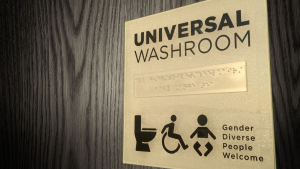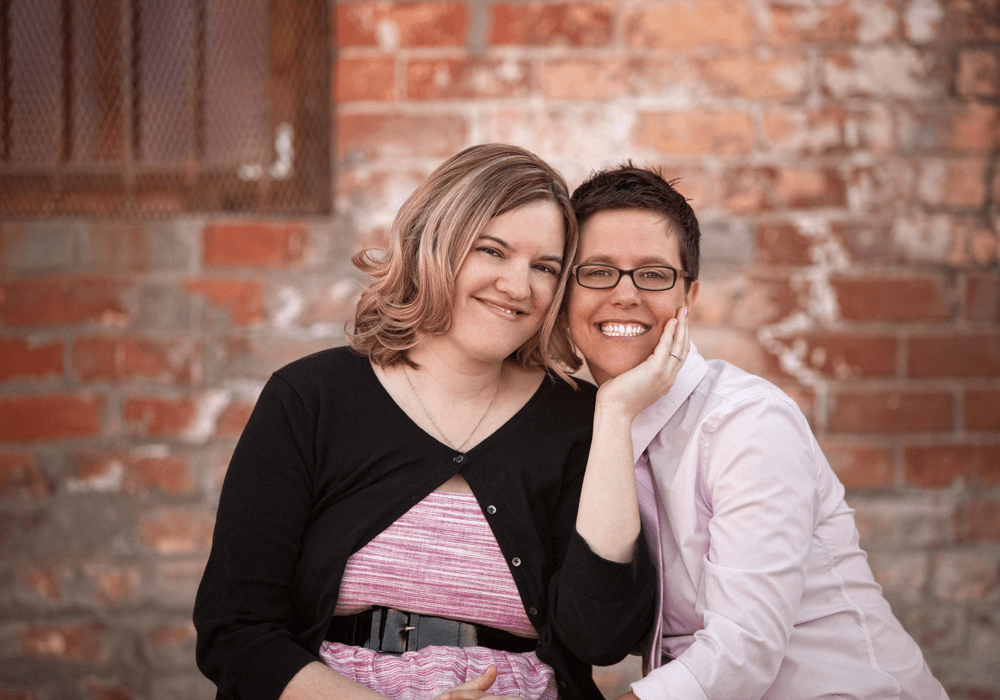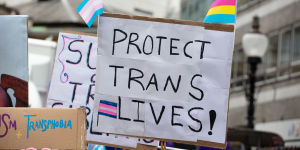LGBTQ+ is an umbrella term used to describe people who may identify as: Lesbian, Gay, Bisexual, Transgender, Questioning, or Queer. The “+” stands for many other identities.
Some of these identities are based on a person’s perception of their own gender. Others are based on the sex or gender of the people they’re most attracted to.
This page explains the difference between sexual orientation and gender identity and provides definitions of some common identities and terms you may hear. It also offers advice for being inclusive of everyone regardless of their gender or orientation.
For more information about the difference between sex and gender, see our page on these two terms.
Sexual Orientation
Sexual orientation is a person’s romantic, emotional, and/or sexual attraction to other people. At the most basic level, someone who is heterosexual is attracted to people of the opposite gender than themselves, and someone who is homosexual is attracted to people of their same gender. But sexual orientation exists on a spectrum, and there are many terms that people use to describe their own orientation.
These are some of the most common terms, but this list is not exhaustive. ASHA never wants to restrict how people define their sexual orientation.
- Gay: Can be used to refer to any person who is emotionally, romantically, or sexually attracted to members of the same gender. The term gay, however, often refers to people who identify as male and are attracted to other male-identified people.
- Lesbian: Someone who identifies as female and is attracted to other female-identified people.
- Heterosexual: Refers to someone who is attracted to members of the opposite gender, also called “straight.”
- Bisexual: Often called “bi” for short. A person of any gender who is attracted to both female- and male-identified individuals.
- Pansexual: Someone who has an attraction to people of any gender or to people regardless of their gender.
- Asexual: Often called “ace” for short. Asexual refers to a complete or partial lack of sexual attraction or lack of interest in sexual activity with others. Asexuality also exists on a spectrum. Asexual people may experience no, little, or conditional sexual attraction.
Gender Identity
Gender is shaped by social and cultural norms and expectations of behavior. Gender exists on a spectrum. People may identify as male, female, transgender, nonbinary, or somewhere in between.
A person’s gender identity is their own personal perception of themselves as female, male, or some combination. Gender exists on a spectrum. People may feel male or female or they may feel that neither of those terms explains their gender identity.
People express their gender in many ways, such as their name, pronouns, dress, hairstyle, and more.
Gender identity is different than sex (sometimes called biological sex or sex assigned at birth). Sex is determined by a person’s chromosomes, their hormones, their (internal) reproductive organs, and their (external) genitals.
Most people’s gender identity matches their sex assigned at birth, but for some people it does not. Some common terms used to describe gender include:
- Cisgender is a term used to refer to a person whose gender identity aligns with the sex assigned to them at birth.
- Transgender is an umbrella term for people whose gender identity and/or expression is different from the sex they were assigned at birth. For example, someone might be born with female genitals but identify as male.
- Nonbinary refers to people who do not identify as male or female. Some nonbinary people also identify as transgender and refer to themselves as trans and nonbinary.
Sexual Orientation and Gender Identity are Different
We often talk about the LGBTQ+ community, but it is important to remember that sexual orientation and gender identity are two different parts of a who a person is. For example, a person could be a cisgender gay man (meaning they identify as a man and are attracted to other men) or they could be a transwoman who is heterosexual (meaning they identify as a woman and are attracted to men).
Any combination is possible, and people’s identities or attractions may fluctuate throughout their lives.
Even though sexual orientation and gender identity are different, we often talk about the LGBTQ+ community, and some terms overlap.
- Queer: A term used by some LGBTQ+ people to describe themselves and/or their community. In the past, Queer was used as a slur against LGBTQ+ people, but some people in the community have reclaimed the word so that it can have a positive meaning.
- Questioning: Describes those who are discovering and exploring their sexual orientation, gender identity, and/or gender expression. It is normal for young people to be questioning their identities. Questioning does not imply that a person is “choosing” to be lesbian, gay, bisexual, transgender, and/or queer. Instead, it recognizes that understanding your own identity is a process of self-discovery that can shift over the course of a person’s life.
Being Inclusive
Often we assume that everybody is cisgender and heterosexual. Or we make assumptions about someone’s gender or sexual orientation based on how they look or act. This can add to the stigma and discrimination that people in the LGBTQ+ often feel.
You can support this community by not making assumptions and being accepting of all identities.
Understanding Pronouns
You have likely seen people with their pronouns listed in their email signature or on a name tag. Some common pronouns are she/her/hers, he/him/his, and they/them/theirs. You might see someone with she/they or they/he. The pairing of two pronouns such as “she/they” says that the person is comfortable with either “she” or “they” pronouns.
Not sure what someone’s pronouns are? Start by using “they.” If you know the person well or it feels appropriate to the situation, you can ask what pronouns they prefer. If not, start by using the non-gendered pronouns “they/them.” This can help avoid awkward situations and make them feel more comfortable and accepted.
If you make a make a mistake and use the wrong pronouns when addressing someone apologize and keep going. You can simply say, “I’m sorry, [insert correct pronoun] …” and continue your conversation.
Other gender neutral language can also help people feel included. Instead of saying, “I am glad you are coming to dinner, is your husband coming?” you can say, “I am glad you are coming to dinner, is your spouse coming?” You could also say, “Is your partner coming?”
LGBTQ+ individuals often feel like they have to constantly explain themselves or their relationships. Small changes in how we talk to people can make everyone feel included.
What to Do When Someone Comes Out to You
Typically, “coming out” or “being out” refers to disclosing your status as not straight. The process of coming out is highly personal and should always be left up to the person. This conversation may be easy for them or it may be awkward or scary. You can make it easier by following simple advice.
- Listen. Silence is golden here. Let them get say everything they want to say without interrupting.
- Be affirming. If someone tells you that they are gay/bi/trans/queer/etc., the best thing that you can do is be supportive. Say, “I’m glad you told me.”
- Avoid unhelpful remarks. Saying something like, “Man, you can totally pass for straight” might be meant nicely but could be hurtful, nonetheless.
- Ask questions (but be respectful). It is okay to ask questions but remember that just because someone came out doesn’t mean they want to share all of the intimate details of their life. Also, keep in mind that it can be exhausting for people to have to come out repeatedly.
- Never out someone else. Unless you are 100% confident that someone is out to everyone in their life, do not share that information with anyone. It is not up to you to decide if someone is open about their sexual orientation or gender identity.
Being An Ally
Members of the LGBTQ+ community have historically been subjected to stigma, discrimination, and even violence in this country. The gay rights movement made a lot of progress in the 1990s and early 2000s, including the Supreme Court’s recognition of same-sex marriage rights.
Unfortunately, there has been a lot of backlash. Anti-gay and anti-trans rhetoric has been increasingly common in recent years and hate crimes are on the rise. At the same time, state legislatures have introduced a record number of anti-trans laws designed to limit what bathroom people use, what sex they must use on legal documents, and whether they can get gender-affirming care. The Trump administration has signed similar anti-trans executive orders and banned transgender people from serving in the military.
The rhetoric has consequence. Members of the LGBTQ+ community-—especially trans women of color-—experience violence at higher rates.
- 44 percent of lesbians and 61 percent of bisexual women experience rape, physical violence, or stalking by an intimate partner, compared with 35 percent of heterosexual women
- 26 percent of gay men and 37 percent of bisexual men experience rape, physical violence, or stalking by an intimate partner, compared to about 26 percent of heterosexual men.
- GLAAD has recorded over 2,000 incidents of anti-LGBTQ+ violence since the start of 2022.
- Transgender people are over four times more likely than cisgender people to be victims of violent crimes
According to the FBI, in 2023, more than 1 in 5 hate crimes were motivated by anti-LGBTQ+ bias. Attacks based on gender identity increased 16% between 2022 and 2023. Attacks based on sexual orientation were up 23% during that same time frame.
Research also tells us that transgender young people face more mental health challenges and an increased risk of suicide. A 2024 peer-reviewed study published in Nature Human Behavior found that anti-transgender state laws directly caused an increase in suicide attempts among transgender youth by up to 72%.
At times like this, it is even more important that everyone—regardless of their own sexual orientation or gender identity—stand up for LGBTQ+ friends, family, and the entire community. The voices of allies can help push back against stigma, discriminatory policies, and hate.
Additional Resources



